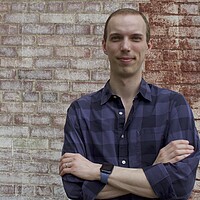Voyage of the mind and body: Two books explore modern pilgrimage
Loading...
It was hearing from a friend that first made me think about traveling. She was walking the Camino de Santiago, an ancient Christian pilgrimage in northern Spain and now a mainstream superhike. Across mountain and plain, through hot and cold, over hundreds of miles, she schlepped a giant backpack and slept in hostels. She said it was one of the best times of her life.
Beginning at the end in Santiago de Compostela, she boarded a train and traveled east for several hours. It then took her weeks to walk back. When she told me stories afterward, she didn’t focus on the plane ride or the Spanish rail – only the walking. There was something to slowing down. In a world where faster is better, deliberate inefficiency alone had impact.
The value of slow travel appears in two recent titles: “The Road to San Donato: Fathers, Sons, and Cycling Across Italy” and “Walking to Jerusalem: Endurance and Hope on a Pilgrimage From London to the Holy Land.” The first uses cycling to rediscover family roots; the second uses walking to advocate for human rights. Both show the difference between traveling and embarking on a pilgrimage.
In “The Road to San Donato,” American journalist Robert Cocuzzo chronicles a journey through the Italian countryside. Cycling almost 500 miles to reach his ailing grandfather’s ancestral home, Cocuzzo connects with his heritage and his father, also along for the ride. The Cocuzzos are thrill-chasing, ascetic athletes. Their bicycles are almost as important to the journey as the destination itself. Cycling makes the story.
Biking 500 miles in another country forces them together in new ways.
“[J]ust as a parent must accept a child for who they are,” Cocuzzo realizes, “a child must accept a parent – warts and all.” Both have plenty of warts. But they’re each other’s only company, so acceptance is their best option.
The journey’s physical toll also forces subtle confrontations with masculinity. In a story so focused on male relationships, Cocuzzo is open about his insecurities and struggles with mental health. But as much as he eschews machismo, he dwells, Hemingway-esque, on his capacity to endure. If you had a mile for every mention of physical discomfort, you could make it to San Donato yourself.
Focused less on personal discovery and more on political advocacy is English playwright Justin Butcher, who in “Walking to Jerusalem” logs a 2,000-plus mile walk to support Palestinian rights. Beginning in London, Butcher and a group of travelers walk almost 150 days, arriving in Jerusalem in time to mark the centenary of the Balfour Declaration, a British pledge of support for an Israeli state and what Butcher sees as the genesis of the modern Palestinian-Israeli conflict. The walk was meant as a display of solidarity with the Palestinian people.
Written as a travel diary, Butcher’s account sometimes crawls more than it walks. But there’s no doubting his sincerity. The empathy he encounters for the Palestinian people – not just in the West Bank but also across Europe – stirs hope for a cause he admits often appears hopeless. During his travels, strangers house him, feed him, and welcome him with love. Why walk? Because walking recalls one of the main restrictions Palestinians face: limited movement.
Tracing a path reminiscent of the Crusades also recasts a relationship of conflict into one of peace. Ending each day with the phrase ambulando solvitur, “it will be solved by walking,” they attempt to build solidarity one step at a time.
There is no better way to understand a group of people than walking 2,000 miles in their shoes.







